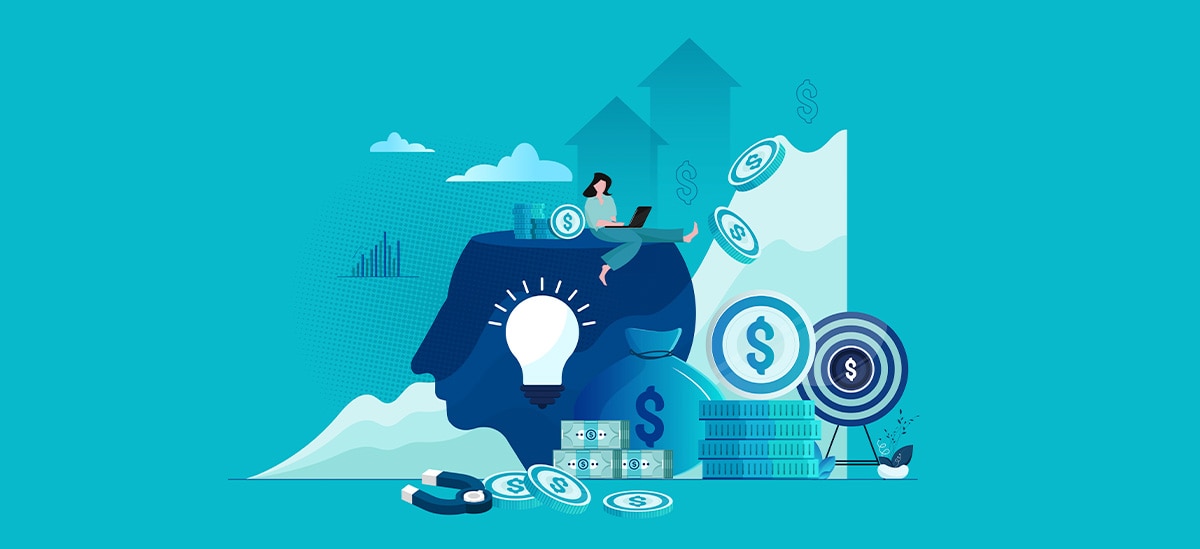Any product introduced to the market has a shelf life — one that could be years or decades away. The product life cycle is a five-stage model that describes how a product progresses through the market.
Knowing where you are in the product life cycle allows you to set realistic goals and objectives along the life cycle of your product, so you have a strong sense of what success may look like at each stage — and what your financial needs may be — and strategize accordingly. An awareness of the product life cycle also primes you for what’s next, so you can anticipate what your needs may be — and start planning now to meet them.
In this guide, we’ll walk through each of the five stages in the product life cycle. You’ll gain insight into what your financial needs may be during each stage, how to adjust your marketing throughout the product life cycle, and the future of the product life cycle in a changing business landscape.
1. Introduction Stage: Set the Foundation
The introduction stage begins when a product is brought to market for the first time. At this stage, sales are typically low, and your target market is likely early adopters looking to get their hands on the latest and most innovative products.
During the introduction stage, you’ll likely invest in a significant advertising campaign to publicize the launch. This initial campaign builds awareness around your product, educates consumers about the innovation you’re bringing to the market, and, ideally, starts building momentum for future growth.
2. Growth Stage: Capture Market and Scale
After being introduced to the market, successful products move into the growth stage.
This stage is marked by a significant increase in sales: The product will have found a loyal customer base and will continue to gain popularity via word-of-mouth and marketing. During this stage, businesses may make minor tweaks to the product based on feedback from customers. They may also explore other business models to boost sales — for example, expanding an eCommerce direct-to-consumer (D2C) model to include retail.[1]
During the growth stage, companies often experience a decrease in their per-unit production costs by streamlining operations and negotiating for more favorable terms with suppliers. However, they may find they need to invest in capital improvements — such as new equipment, more talent or a larger manufacturing space — to meet customer demand.
In addition, you’ll likely see new competitors enter the market after seeing your success — a trend that will continue in the next phase of the product life cycle.
3. Maturity Stage: Maximize Market Penetration
The maturity stage begins when sales level off. In some cases, sales will continue to grow slowly; in others, they’ll flatten over time.
This stage is often the most profitable one for businesses: The product has strong customer awareness and a sizable customer base, and the business has had time to optimize and streamline operations. Generally, the goal is to remain in the maturity stage for as long as possible.
However, that can be easier said than done. As more and more competitors enter the market, businesses must find ways to differentiate their product and retain market share. Businesses that price their product too aggressively — or that no longer meet the needs of modern consumers — risk a decline in sales.
Financial success during the maturity stage relies on a strong grasp of cash flow management. Because there are fewer opportunities to increase margins by raising prices, businesses must find a pricing strategy that helps them maintain a healthy cash flow to sustain operations, as well as invest for the future.
4. Decline Stage: Navigating Market Saturation
Eventually consumer preferences change and products enter the decline stage, characterized by waning demand and a decrease in sales.
At this stage, businesses should assess the products' financial performance and create financial forecasts to identify the best next step. They may opt to drive sales by competing on price, or focus their marketing efforts on retaining their most loyal customers. In some cases, they may decide to retire the product from the marketplace and focus on their other offerings.
5. New Development Stage: Innovation and Revitalization
A shift in the market presents new opportunities to address customers’ unmet needs, making the final stage of the product life cycle innovating a product to appeal to modern customers.
This could include adding functionalities to solve problems that competitors’ products have yet to address, introducing a more sustainable product to appeal to climate-conscious shoppers or leveraging technology to create a “smart" version of a product, such as a blender that can can be controlled with an app.
During the phase, businesses will use the findings from their market research to learn how best to reach new customers, invest in research and development, and then launch their product with a significant advertising push — re-starting the product life cycle all over again.
Apply the Product Life Cycle to Your Marketing Strategies
Marketing plays a key role in your success at any stage of the product life cycle — but the objective of your marketing shifts as you move through the product life cycle.
In the early stages — the introduction stage and early growth stage — marketers typically focus on raising product awareness. Then, once competitors appear in the market in the late growth and maturity stages, the focus shifts to differentiating the product in an increasingly crowded market.
In the decline stage, businesses typically pare back on marketing and instead invest in innovation and product development. They’re then ready to re-start the product life cycle with a new, modernized product.
The Future of the Product Life Cycle in the Changing Business Landscape
Product life cycle management is important for any business, but rapid technological advances can shift consumer expectations — and market conditions — faster than ever.
Market disruptors may rapidly launch and grow within an industry, but stall out after a short time in maturity, exiting the market almost as quickly as they came. In fast-moving fields like technology, the rapid speed of innovation shortens the product life cycle and puts pressure on business to introduce and grow products quickly to maximize time in the maturity stage before they become obsolete.
However, technology can also help businesses track — and adapt to — shifts in the business landscape. Advances in artificial intelligence and machine learning make it easier to access real-time insights into a product’s financial performance compared to its competitors, which might help companies make informed, strategic decisions throughout the product life cycle.
The Bottom Line
No matter what you're selling, understanding where your product is in the product life cycle helps you strategize. It can help you assess your current financial needs as well as create a financial plan for the future. The product life cycle can also help you identify opportunities for investment — for example, in capital improvements or in technology to get real-time insights into your performance — to set your business up for long-term success.
Video Transcript:
Every product has a shelf life. The product life cycle charts its journey through the market and companies leverage this cycle to set goals and plan their financial futures. It starts with the introduction stage, when a product is brought to market and finds its first customers. Successful products move on to the growth stage, marked by an increase in sales and profits. In the maturity stage, sales level off as the product faces more competition in the market. Over time, consumer preferences change, and products move into the decline stage, marked by a drop off in sales. Finally, products enter the new development stage, where businesses use market research to innovate a new product and start the product life cycle all over again.




